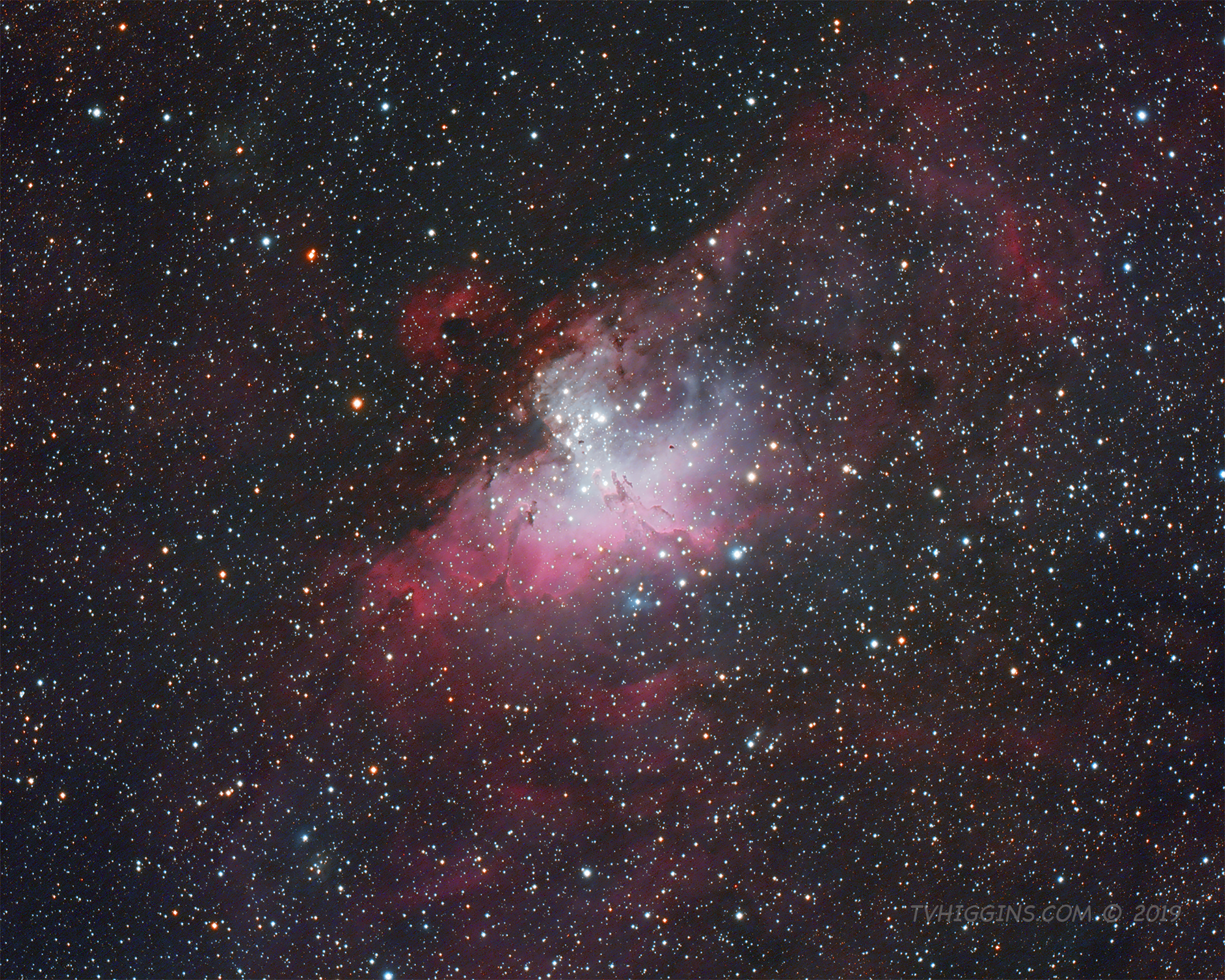- Telescope: Stellarvue SVA130T-IS
- Mount: Losmandy G-11 with Gemini 2 controller
- Autoguiding: Yes
- Optical Configuration: 1x 910 mm (f/7)
- Camera: Canon 60Da
- Light Frames: 24, 300-s subframes stacked (120 min.)
- Calibration: None (no darks, no flats, no biases)
- Exposure Time(s): 2 h or 120 min. (24 x 5 min.)
- ISO: 800
- Pre-processing & Processing: PixInsight
- Post-Processing: Photoshop CC
- Imaging Location: Sierra Nevada Mountains (Altitude: 8,600 ft)
When photographing the cosmos, the path to accurate color reproduction often lies in the stars. This image of the Eagle Nebula reveals a broad range of star colors calibrated from their true color temperatures. Faithful depiction of star color ensures the color fidelity of other objects in the image, too.
The deep red color of the Eagle Nebula originates from light emitted by singly ionized hydrogen gas (H-alpha). The vast clouds of gas and dust in nebulae make them effective stellar nurseries, where the stuff of the universe is transformed into gleaming new stars.

Leave a Reply